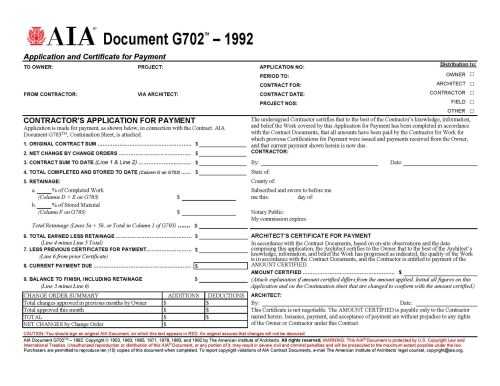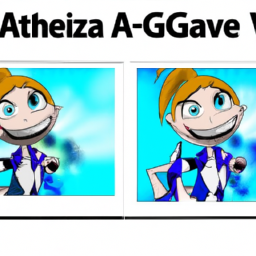
Hey there, my friend! Today, I want to talk to you about something that a lot of people find confusing and time-consuming when it comes to construction projects. That’s right, I’m talking about the AIA G702 and G703 forms. But don’t worry, because I have great news for you. You can actually download these forms for free! Let’s dive in and learn more about what these forms are and why they’re important.
G702 and G703: Understanding the Importance of These Construction Forms
What are G702 and G703 Forms?
If you’re in the construction business, you might have heard about G702 and G703 forms. But what are these forms and why are they so important?
G702 is a form used to request payments for a construction project, specifically for work completed to date. On the other hand, G703 is a form used to record and track the amount due to subcontractors or suppliers for materials or labor provided.
Both forms are widely used in the construction industry, and are recognized by the American Institute of Architects (AIA) as standard documents for construction contracts.
Why are G702 and G703 Forms Important?
G702 and G703 forms are critical components in construction contracts, as they help ensure that contractors and subcontractors are paid on time and for work done.
With the G702 form, contractors can request payment for work completed to date, and with the G703 form, they can track payments to subcontractors and suppliers, ensuring that everyone is paid in a timely manner.
The forms can also help resolve disputes over payment and avoid legal issues that can arise when payments aren’t made on time or in full.
In addition, the use of G702 and G703 forms can help contractors and owners keep track of the project’s progress and financial status, making it easier to manage expenses and stay within budget.
How to Use G702 and G703 Forms
Now that you understand the importance of G702 and G703 forms, it’s important to know how to use them correctly.
When using the G702 form, the contractor should include a detailed description of the work completed to date, the amount of the payment requested, and any change orders or other adjustments that may affect the payment amount.
The G703 form, on the other hand, should be used to track payments to subcontractors and suppliers. The contractor should include the name of the subcontractor or supplier, the amount due, and the date of the payment.
It’s important to note that both the G702 and G703 forms must be signed by all parties involved in the construction contract, including the contractor, owner, and subcontractor or supplier.
Where to Download G702 and G703 Forms
G702 and G703 forms can be obtained from the AIA’s website, as well as other online resources. However, it’s important to make sure that any form downloaded is the most current and up-to-date version, as forms can be revised and updated over time.
It’s also important to note that while G702 and G703 forms are widely used in the construction industry, they may not be suitable for all construction projects. Other forms or contracts may be more appropriate depending on the project’s scope, budget, and specific requirements.
Conclusion
In conclusion, G702 and G703 forms are critical components in construction contracts, helping to ensure that contractors and subcontractors are paid on time and for work done. They can also help resolve disputes over payment and avoid legal issues that can arise when payments aren’t made in full or on time.
With the proper use of G702 and G703 forms, contractors and owners can keep track of the project’s progress and financial status, making it easier to manage expenses and stay within budget.
Remember to always use the most current and up-to-date version of these forms, and to make sure that all parties involved in the construction contract are aware of and agree to their use.